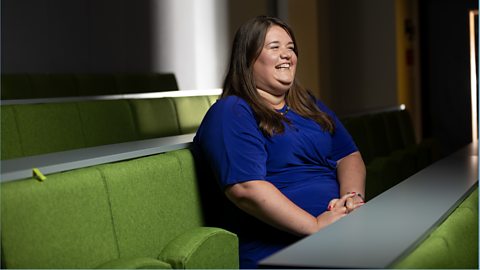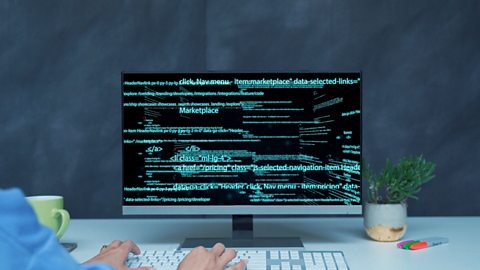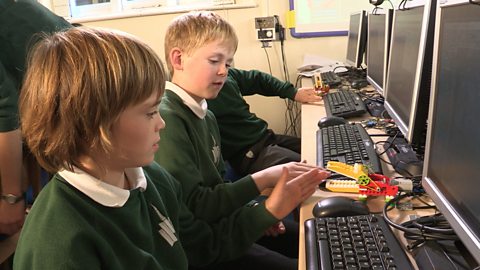
The benefits of this exciting curriculum element extend far beyond the end product of a line of code.
By Sarah Hallam, Faculty Lead for Technology-Enhanced Learning at Edge Hill University
In this article for primary teachers, Sarah Hallam, Faculty Lead for Technology-Enhanced Learning at Edge Hill University offers tips on how to approach teaching coding.
Since the introduction of computing in the 2014 National Curriculum, I still meet teachers who are fearful of the subject. Coding is just one element of the computing curriculum but it appears to be the gremlin in the system.
ItÔÇÖs not about prescriptively training pupils for employment in the much heralded ÔÇÿfuturisticÔÇÖ jobs that we hear so much about, itÔÇÖs about embracing a rare opportunity in our curriculum to explore, to be playfulÔǪto be creative. LetÔÇÖs have a look at how you can embrace more creative computing with confidence.
Learn the lingo
We have probably all experienced being in an environment where language is a barrier. Whether thatÔÇÖs being on holiday and taking a punt on ordering an item from a menu you canÔÇÖt understand or our first few months in a staff room where acronyms present the same challenges! The first step in ensuring you can be creative with coding is getting the basics right.
YouÔÇÖll find a series of really useful videos that introduce the language of coding, here. Dropping one of these into your daily routine with your children not only supports a great understanding of the foundations of coding - it also reiterates the cross-curricular nature of the subject. The principles youÔÇÖll develop with coding often lend themselves across the STEM subjects and even into literacy and art.
If this then, that!
Coding is a subject that encourages us to think in a very unique way. We can fall into a common trap of teaching coding in a very sequential nature, but it is more important to take the time to think around the concept of the ÔÇÿIf I do this, then that should happenÔÇÖ that we often distill coding to.
Taking opportunities to explore the type of thinking that coding encourages is where the magic really begins to happen. In coding, we have the opportunity to use concepts from subjects across the curriculum: logic in science; pattern in art; reasoning in mathematics.
The simplest way to foster this is by embracing an exploratory attitude alongside your pupils. Why not start by providing pupils with a problem and see if they can work out how or if a computer could solve it? Asking children to think about big possibilities, even those outside of their current coding capabilities, reiterates the importance and place of coding in an ever-growing digital world.
DonÔÇÖt reinvent the wheel
It can sometimes be daunting to teach a concept that might sit outside of your own comfort zone. With coding, there is no need to reinvent the wheel. There are a plethora of resources available to support you:
including resources and a network of regional hubs.
has a significant range of resources and development opportunities with a real focus on developing community.
Computing at School also offer which provides a plethora of ÔÇÿunpluggedÔÇÖ coding activities. Moving your teaching of coding away from the screen can really help to consolidate pupilsÔÇÖ thinking around trickier concepts and it tends to help them identify more instances of where coding is used in the world around them.
Ask the experts
One of the most untapped resources in classrooms are the children who learn in themÔǪ itÔÇÖs highly likely that you will have pupils in your class who are already interested in coding. Whether they tinker with robotics or are keen Minecrafters, seek them out and use their support! Establishing children as ÔÇÿDigital LeadersÔÇÖ in the classroom can be incredibly empowering for everyone involved.
Coding across the curriculum
The benefits of this exciting curriculum element extend far beyond the end product of a line of code coding provides significant opportunities to develop skills that can be used right across the curriculum.
The rules, patterns and hierarchies that exist within the language of coding are closer to the ways in which we teach grammar than you think. Coding gives pupils an opportunity to see the real impact that their language has; if instructions arent explicit and within the rulesnothing happens!
Coders are excellent problem solvers. The computational concept of decomposition (breaking a problem down into small steps to tackle it) can be a skill that is invaluable across many subjects and is certainly a life skill that will come in handy.
Many elements of coding sit within the mathematical world, coding challenges will often ask children to call upon quick calculations to solve problems or look closely at data to see the bigger picture of a problem.
Big claims are made about the impact that coding and computing skills can have on our future, but we can see many benefits beyond that. Giving coding a real context can support learners in understanding that all important ÔÇÿwhy?ÔÇÖ and deepens their understanding of just how much of our world is digital.

Cracking Computing. collection
Narrated by comedian and actor Doc Brown, this series of short films explores some of the key topics and terminology for pupils studying primary computing.

Cracking the Code. collection
In this series of short films, Minna Kane and her team of young coders find out all about the exciting world of computer programming.

│╔╚╦┐ý╩Í Own It has a page dedicated to teachers of pupils aged 7-11. It has downloadable teacher resources paired with videos, articles and quizzes covering topics such as managing online information, privacy and security.
